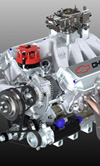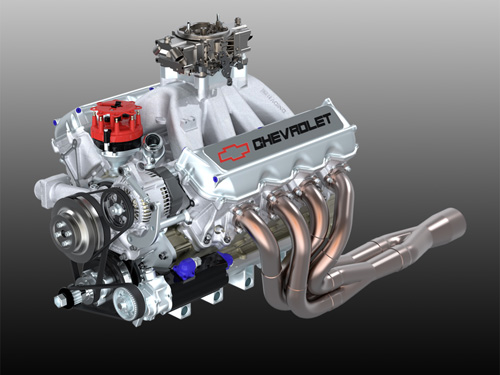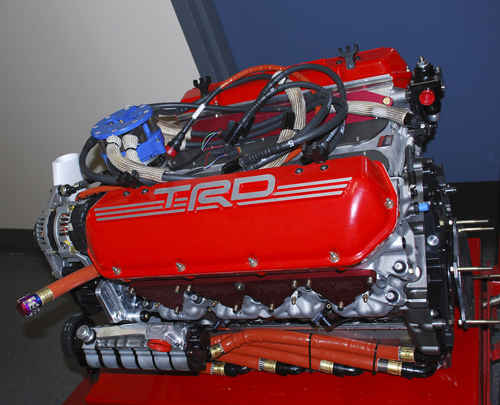Commonality the aim
 NASCAR is moving toward parts commonality in nearly every facet of its competition. Currently, discussions are underway to produce an oil pump system that is common to all three of NASCAR’s national series: Sprint Cup, Nationwide Series and Camping World Truck Series.While this change likely will not occur until the 2010 season begins, NASCAR is considering announcing a rules change midway through the current campaign.
NASCAR is moving toward parts commonality in nearly every facet of its competition. Currently, discussions are underway to produce an oil pump system that is common to all three of NASCAR’s national series: Sprint Cup, Nationwide Series and Camping World Truck Series.While this change likely will not occur until the 2010 season begins, NASCAR is considering announcing a rules change midway through the current campaign.
Communising parts between the three series should eventually reduce costs by eliminating near-redundant development programs for parts that serve equivalent functions, according to Dr Andrew Randolph, engine technical director of Earnhardt Childress Racing.At the present time, entrants in the Sprint Cup Series are permitted five oil pump scavenge sections where the other two series use four. In any case, the dry sump oiling system needs to use a single oil pump of no more than 9-1/2 inches length and 3-1/2 inches cross-section.The primary differences, aside from scavenge sections, is overall length of the system including seals, bearings, adjusters, bolt-on end plates and covers – but not including the front end of the shaft – which is 10-3/4 inches for the Cup cars and 10 inches for the Nationwide cars and Camping World trucks. There are also differences in the oil pan, where the Cup series allows segmented and radiused oil pans, while the other two require open box-style pans, he explained.

The idea of a common oil pump has bounced around for a few years now but gained impetus in 2009 as sponsorship dollars began to dry up across the board. “Throwing away slightly used parts that could otherwise go to the Nationwide or truck teams just doesn’t work in this economy,” Dr Randolph said.Finally, he acknowledged, the rule makers in all three series are talking with one another and even asking teams and engine builders for input as to what solution would make the collective series more affordable for everyone – in particular the Nationwide and truck groups.The big question, of course, is which configuration NASCAR will adopt – if it follows through on this idea – for all classes and how the teams will work within the decided strictures. There is bound to be whining from all sides.“The lowest cost option would be to spread the Nationwide and Camping World pump and pan to Cup,” said Dr Randolph. “With one less section, it limits what you can do with the pan design and deceases high speed power by about five horsepower in ‘open’ configuration.”

Initial cost will be a factor: replacing pumps, pans and oil lines – which can be very expensive when you are looking at anywhere from 8-15 engines per one-car/truck team. Additionally, teams must re-optimise their complete oil systems, including plumbing adjustments and revisions to oil pans. Certain engines might need adjustments to the cylinder head and to the valley drain system, but that will not be known until the project is undertaken.Oil pumps and ancillary components certainly aren’t the most glamorous of parts in the NASCAR bin but they could serve as many first-line soldiers do: clearing the path for more progressive changes that allow NASCAR to keep costs under control without impacting action on the track. Adopting a single oil pump is a change that would be totally transparent to the fans, according to Dr Randolph, and make the long-term cost of racing less expensive to the teams.It is just up to Sprint Cup, Nationwide and Camping World rule makers to find a middle ground. “I think, down the road, other engine parts could be communised and that would serve to make ‘trickle down’ almost cost free,” said Dr Randolph.